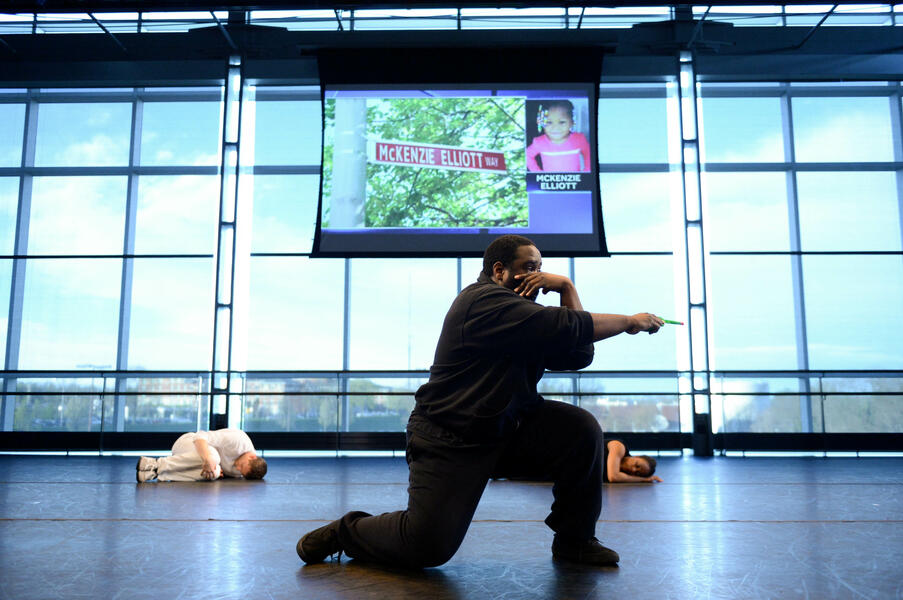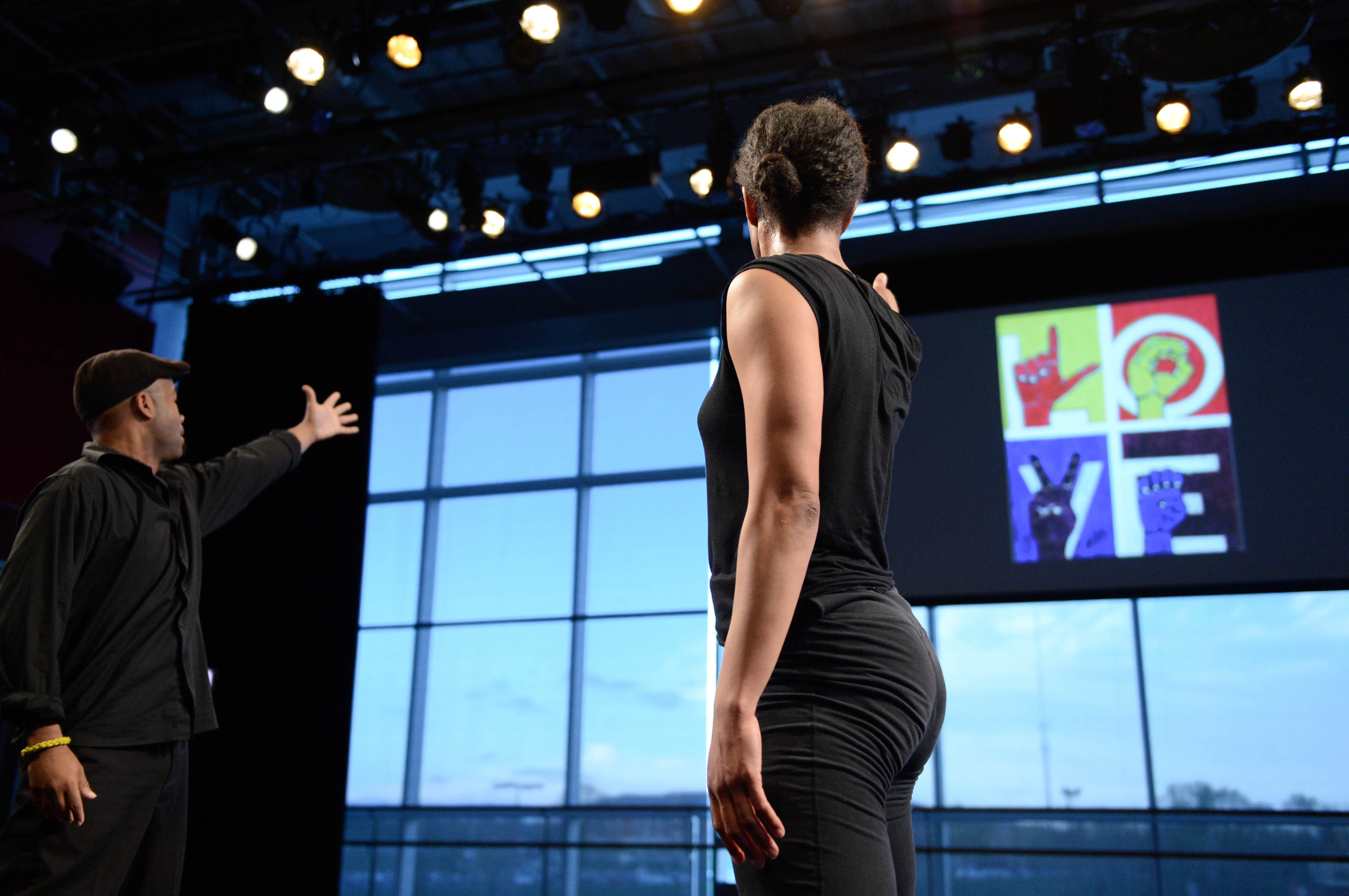Designed and directed by Breai Mason-Campbell, this piece recommends actions to address the crises of racial tensions in Baltimore and beyond. Through movement, she suggests that by challenging our visceral reactions to people's differences, being vulnerable before one another, and developing a vision of how we can work and live together, we can overcome the challenges of our time. In three vignettes, illustrate the possibilities of this process.The first movement of Heroes and Villains, Visceral deals with the how we are each seen in the world, and the role that plays in our quality of life. The audience is challenged to ask the hard questions that challenge our assumptions, and, further, to commit to remain present for the sometimes harder answers. The dancers begin in a privilege line, making visible the structural inequities which sometimes obscure the root causes of social ills. Through solo performance, partner dance, mirroring and contrast, the story of each character is communicated through movement. In the development of this piece, the dancers discussed the ways in which we feel empowered or disempowered in our daily lives, and collaboratively constructed choreography to illustrate that narrative.
The second movement, Vulnerability, is designed to evoke deep emotion, and deals with the questions each of us have about our role in change, and our complicity in the problems we now face in our society. In the wake of staggering numbers of murders in Baltimore, questions of police brutality, and omnipresent, de-facto segregation, often based on fear or the desire for safety, slowing down snap decisions and revealing the depth of individual lives is our task in this work. Mason-Campbell completed this work with an intentionally cross-cultural ensemble, which discussed the pain each member experienced in this cycle of violence, and hopes for change. The choreography tells that story.
The last movement of this piece deals with Vision, the third of a three-tiered, arts-based, community development methodology that Mason-Campbell upholds thorough practice, performance, and the passing on of folk dance traditions. The choreography considers the downfalls of conformity and assimilation as community ideals, and invites the silenced to speak.




